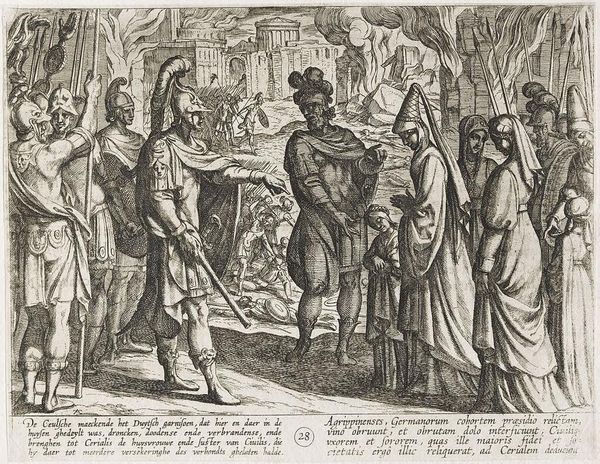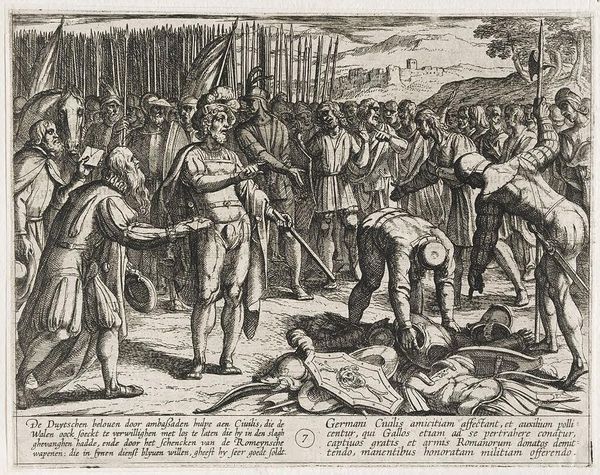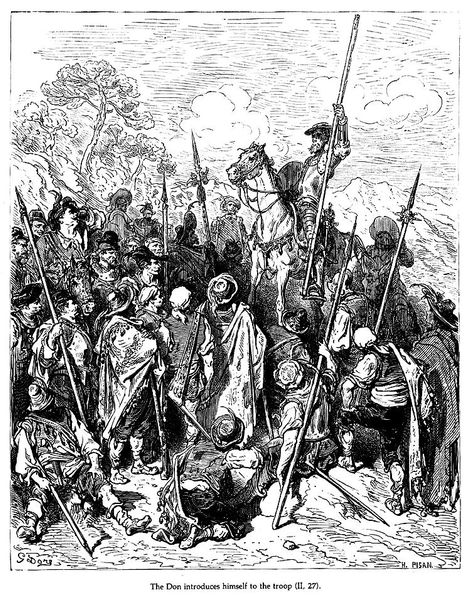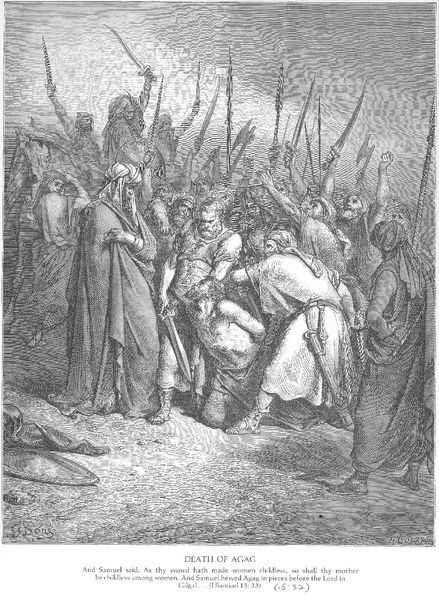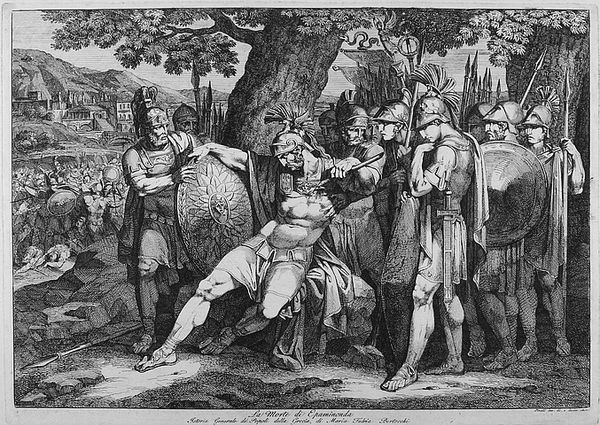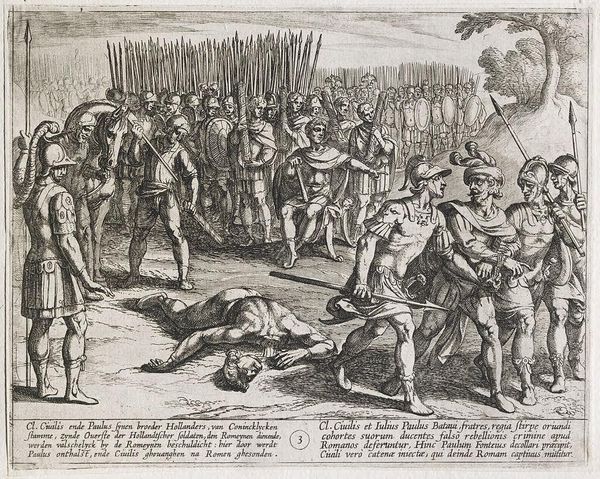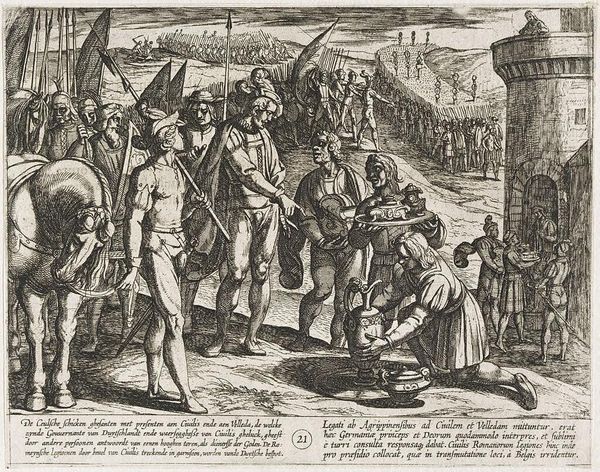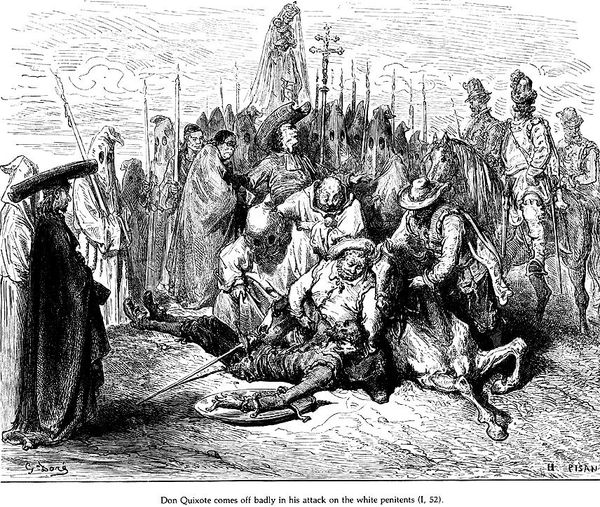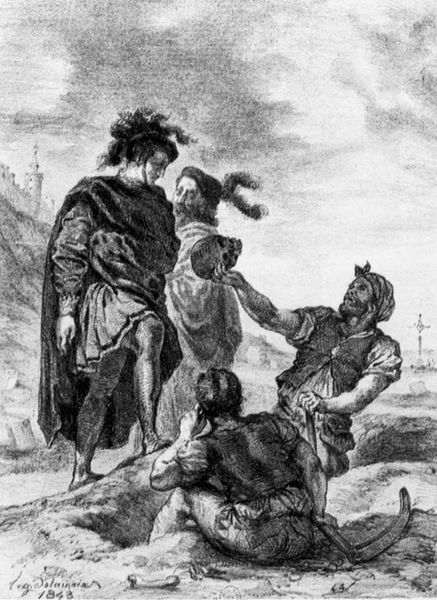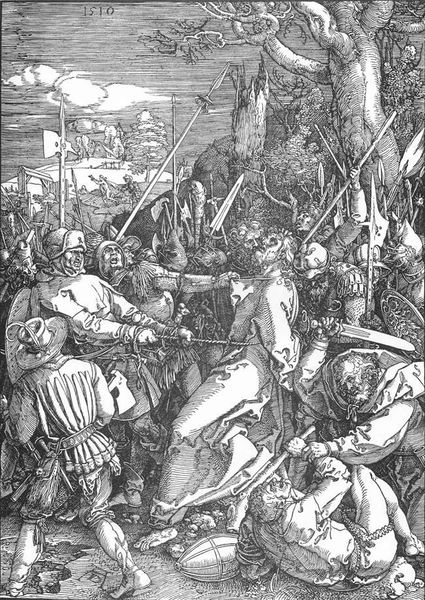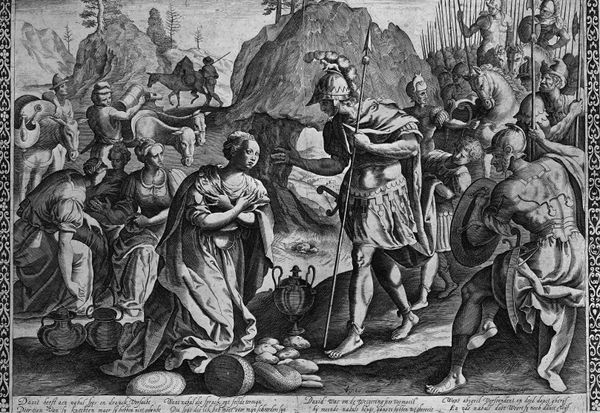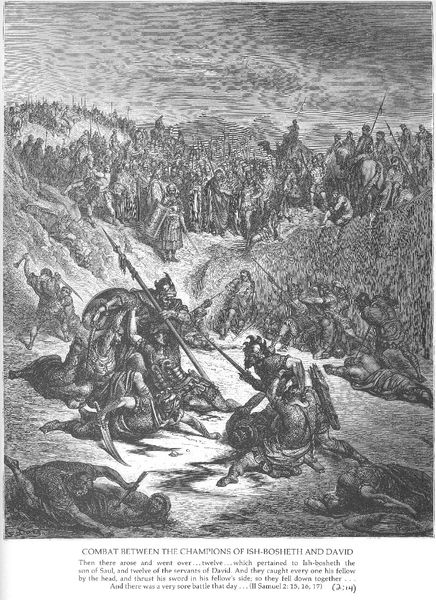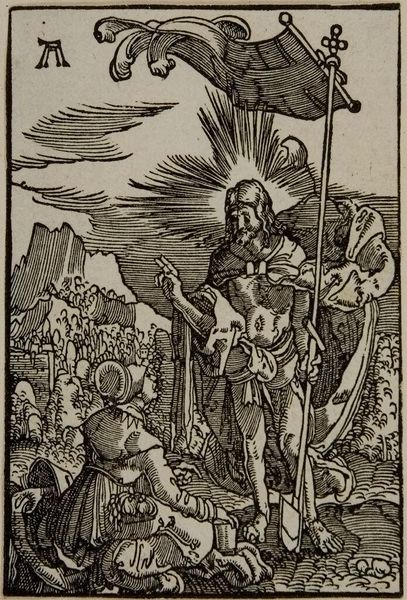
print, etching
#
ink stage
# print
#
etching
#
sculpture
#
charcoal art
#
black and white theme
#
highly detailed
#
black colour
#
black and white
#
repetition of black colour
#
carved
#
pencil art
Dimensions: 130 mm (height) x 160 mm (width) (plademaal)
Editor: This is Carl Bloch’s etching, "Læsende dame", from 1882. The stark black and white imagery gives it a really dramatic feel. I’m immediately struck by the juxtaposition of violence and triumph. What narratives do you see unfolding within this composition? Curator: This print immediately activates my sense of inherited cultural memory. Consider the central figure—the warrior. How does his armor, his stance, resonate with established depictions of heroism in your mind? Think of figures from antiquity or Norse mythology, and the enduring image of the solitary, burdened hero. Editor: I definitely see echoes of those classical heroes, a kind of stoic resignation perhaps? He’s surrounded by cheering figures and fallen bodies. It makes me think of the cost of victory, but then I wonder what that patterned frieze along the bottom represents, with the eagle and lion. It seems disconnected to what’s happening above it. Curator: The frieze is interesting, isn't it? Look at the lion—a solar symbol of strength and courage—and the eagle, representing vision and power, both spiritual and earthly. Could this be a suggestion that these figures are acting under divine will, or even represent spiritual concepts that are mirrored in worldly affairs? The seemingly chaotic composition starts to resemble established symbolic conventions, doesn't it? How does understanding this impact your initial response to the scene? Editor: I see what you mean. I initially saw chaos, but now it seems more like a symbolic representation of the intersection between the earthly and divine. So it's perhaps less about literal victory and more about these archetypes in conflict? Curator: Exactly! Think about the choices an artist makes when using familiar symbols. Bloch uses conventional archetypes, imbuing this etching with a lasting resonance that transcends the depicted event. Editor: That really changes my perspective! I’m now looking beyond the surface narrative, understanding it’s engaging with much larger, timeless ideas. Thanks for pointing that out.
Comments
No comments
Be the first to comment and join the conversation on the ultimate creative platform.
